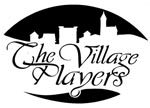
Built in 1888, our building started out as a Unitarian Church. It was purchased in 1911 by the Masons, and was renovated for use as their meeting place. It served the community for movies, theater, receptions, classes, dances, auctions, Bingo, and many other activities. The Village Players used the building many times while the Masons owned it, and were able to buy it in January, 1995 when it went up for sale.

HISTORY OF THE BUILDINGAT 51 GLENDON STREETThe building at 51 Glendon Street has had three owners in its 120 year history, the Unitarian Society ofWolfeboro, the Masonic Temple Association and The Village Players.The building, now known as The Village Players Theater, was built as a Unitarian Church. The churchwas founded as a response to Sunday services conducted by Rev. Powell, a Unitarian minister fromLaconia, on the deck ofThe Lady ofThe Lake while it was tied up at the town dock in Wolfeboro in thesummer of1882.In March of1886 a small but influential group formed the Unitarian Society ofWolfeboro and later thatyear it was decided to build a church. The contract for building the church was awarded to CharlesPrindle and Winthrop Hersey. The building was dedicated in January of1888. The cost ofthe church,including beautiful frescoes and furnishings was six thousand dollars. At the time, it was the mostexpensive church ever built in Wolfeboro. As you can see bythis photo, it looked like a church and not what it looks liketoday.The church was built to be flexible like a ship to withstandstrong winds. One Sunday a group oframbunctious boys,including Barbara Zulauf’s father, thought it would be fun tosee ifthey could make the building move by swinging theirlegs as they sat in a pew. It worked. The disconcertedminister felt the pulpit swaying. An emergency meeting wascalled and it was decided to shore up the sanctuary bybuilding a sturdy brick wall right across the basement. Thewall is still there today. In the attic you can see the sturdyhigh arched beams that held up the roofand formed theceiling ofthe sanctuary.At that time the Unitarian church was the largest andgrandest in Wolfeboro, but over the years attendance wainedand the congregation disbanded in 1908. The building wassold in 1912 to the Masonic Temple Association.Financed by shares for the purchase ofthe building andrenovations, the Masons hired Goodwin and Doe to doconsiderable remodeling. The church steeples and religiousornamentation were removed, the front entrancesreconfigured, and meeting rooms were added upstairs bydividing the large, vaulted sanctuary horizontally thus creating a large open space upstairs the same sizeas the sanctuary downstairs. About all that remains ofthe original sanctuary are the large overhead doorsdividing the auditorium from the reception room and held up by heavy 80lb sash weights. Astage wasbuilt where the church altar had been. Atemporary projection booth, stage curtains and other theaterequipment was put in place.From the very beginning the building was an integral part ofcultural life in Wolfeboro. The Masonsmade their building available to many community groups. Known variously as Masonic Hall, TempleAuditorium, The Opera House and The Little Theater, the historic building became a hub oftownactivity.In the earliest days silent movies were shown three nights a week . Tickets cost 10 cents for children and15 cents for adults. Dances were held on Wednesday nights after the show. Ice cream and refreshmentswere sold. Later, in the 1940s, when movies were shown in the Town Hall, overflow patrons were sentto the Masonic Hall when big hit movies filled the Town Hall. It was purchased in 1911 by the Masons, and was renovated for use as their meeting place. It served the community for movies, theater, receptions, classes, dances, auctions, Bingo, and many other activities. Before the Barnstormers theater group had a home in Tamworth, it traveled to Wolfeboro to put onshows in the building. Even today, backstage walls are covered with autographs ofactors in plays formthe 1930s. The Village Players treasures these mementos ofpast theater productions and has taken careto preserve them during recent renovations. The tradition continues today with cast and crew memberssigning backstage walls for each production.On November 9, 1938, Goodwin and Doe began operations to reconstruct the entire front ofthebuilding giving the Masonic Lodge a more prepossessing appearance. This was the three-story additionthat now houses the theater lobby and ticket booth at the main entrance, a projection booth, and storagespace upstairs. At some time a wing was added to the back ofthe building to house the existing stage.As the building aged and no longer met code standards for public events, it became burdensome for theMasons. It was difficult to keep up with repairs and the heating costs were astronomical. The lodgeneeded a space better suited to their needs. So, in 1995, the old Masonic Temple was put on the marketfor an asking price of$95,000. Extensive repairs required, parking and code restrictions made thebuilding economically unfeasible for a business to buy. The Masons even considered tearing down thebuilding and sought a demolition permit. In 1995 a non-profit organization, The Village Players, offered$30,000 for the building and it became their property.Many public and private events have been held in the auditorium over the years. The Lions Clubsponsored Winter Carnival dinner dances and weekly Bingo games. BrewsterAcademy proms, publicmeetings, ballet classes, wedding receptions, minstrel shows, and many other gatherings drew folks intothe building. Ashort-lived Wolfeboro professional basketball teem played in the auditorium. DuringWorld War II the space was set up as a potential emergency hospital in the event ofan enemy attack.More recent uses, in addition to The Village Players performances, include Perform ItYoung People’sShakespeare Company performances and workshops, First Night events, Friends ofMusic concerts, folkconcerts, art exhibits, string recitals and other arts-related events. The Governor WentworthArtsCouncil holds meetings in the reception room and Clearlakes Chorale stored its large music library inone ofthe upstairs rooms.Renovations to the building are on-going and the next project will probably be enlarging the stage andback-stage area.
